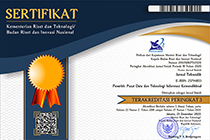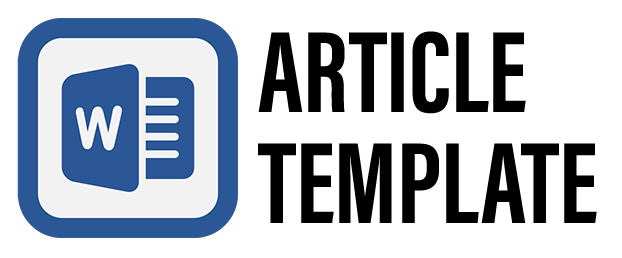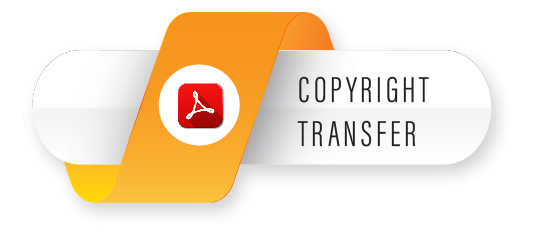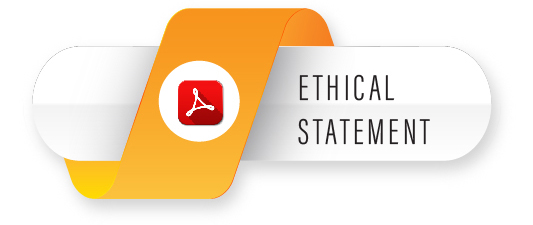FLIPPED CLASSROOM: SEKOLAH TANPA PEKERJAAN RUMAH
DOI:
https://doi.org/10.32550/teknodik.v25i1.457Keywords:
Flipped Classroom, Sekolah Tanpa Pekerjaan Rumah, Pekerjaan RumahAbstract
References
Buku
Bergmann, J. and Sams, A., 2012. Flip your Classroom: Reach Every Student in Every Class Every Day (International Society for Technology in Education, Washington).
Darmadi, D., 2017. Pengembangan Model dan Metode Pembelajaran dalam Dinamika Belajar Siswa. Yogyakarta. Deepublish.
Drisko, J. W., & Maschi, T. (2015). Content analysis. Pocket Guides to Social Work R.
Isrok’atun & Tiurlina, 2016. Model Pembelajaran Matematika Situation-Based Learning di Sekolah Dasar. Sumedang: UPI Sumedang Press.
Joyce, B., Weil, M. and Calhoun, E., 2009. Model-Model Pembelajaran. Edisi Delapan. Yogyakarta: Pustaka Pelajar.
Krippendorff, K. (2004). Content analysis: An introduction to its methodology. Sage publications.
Lorin, W.A. and David, R.K., 2015. Kerangka Landasan Untuk Pembelajaran, Pengajaran Dan Asesmen. Yogyakarta: Pustaka Pelajar.
Rahayu, W., 2015. Model Pembelajaran Komeks: Bermuatan Nilai-Nilai Pendidikan Katrakter Aspek Membaca Intensif di SD. Yogyakarta: Deepublish.
Sani, R.A., 2013. Inovasi Pembelajaran. Jakarta: Bumi Aksara.
Slavin, R.E., 2008. Psikologi Pendidikan: Teori dan Praktek (Terjemahan Samosir, M dkk: Educational Psycology: Theory & Pratice), Edisi 8. Jakarta: PT Indeks.
Jurnal/Prosiding/Disertasi/Thesis/Skripsi
Akın, E., 2016. Flipped classroom learning model and its availability in Turkish Education. Journal of Education and Training Studies, 4(11), pp.100-108.
Arnold-Garza, S., 2014. The flipped classroom teaching model and its use for information literacy instruction. Communications in Information Literacy, 8(1), p.9.
Breimer, E., Fryling, M. and Yoder, R., 2016. Full flip, half flip and no flip: Evaluation of flipping an introductory programming course. Information Systems Education Journal, 14(5), p.4.
Çakır, R., Sayın, V., & Bektaş, S., 2021. Bibliometric analysis of studies conducted between 2015-2019 on the flipped classroom model. International Journal of Research in Education and Science (IJRES), 7(1), 163-187. https://doi.org/10.46328/ijres.1126.
Çevikbaş, M. and Argün, Z., 2017. An Innovative Learning Model in Digital Age: Flipped Classroom. Journal of Education and Training Studies, 5(11), pp.189-200.
Darmawan, D. and Harahap, E., 2016. Communication Strategy For Enhancing Quality of Graduates Nonformal Education Through Computer Based Test (CBT) in West Java Indonesia.International Journal of Applied Engineering Research, 11, pp. 8641-8645.
Darmawan, D., Ruyadi, Y., Abdu, W. J., and Hufad, A., 2017. Efforts to Know the Rate at which Students Analyze and Synthesize Information in Science and Social Science Disciplines: A Multidisciplinary Bio-Communication Study. OnLine Journal of Biological Sciences, 17(3), pp.226-231.
Eppard, J. and Rochdi, A., 2017. A Framework for Flipped Learning. International Association for Development of the Information Society.
Fisher, R., Ross, B., LaFerriere, R. and Maritz, A., 2017. Flipped learning, flipped satisfaction, getting the balance right. Teaching & Learning Inquiry, 5(2), pp.114-127.
Gomez-Lanier, L., 2018. Building Collaboration in the Flipped Classroom: A Case Study. International Journal for the Scholarship of Teaching and Learning, 12(2), p.7.
Griffiths, K.E., 2005. Personal coaching: A model for effective learning. Journal of Learning Design, 1(2), pp.55-65.
Krahenbuhl, K.S., 2017. An Engaging, yet Failed Flip. InSight: A Journal of Scholarly Teaching, 12, pp.132-144.
Kurihara, Y., 2016. Flipped Classroom: Effects on Education for the Case of Economics. Journal of Education and e-Learning Research, 3(2), pp.65-71.
Jarir, J., & Khairiah, K. (2019). NILAI-NILAI DAKWAH DI MEDIA MASSA (KAJIAN TERHADAP RUBRIK OPINI RIAU POS). Al Imam: Jurnal Manajemen Dakwah, 182-194.
Mazur, A., Brown, B. and Jacobsen, M., 2015. Learning Designs using Flipped Classroom Instruction| Conception d’apprentissage à l’aide de l’instruction en classe inversée. Canadian Journal of Learning and Technology/La revue canadienne de l’apprentissage et de la technologie, 41(2).
McCollum, B.M., Fleming, C.L., Plotnikoff, K.M. and Skagen, D.N., 2017. Relationships in the Flipped Classroom. Canadian Journal for the Scholarship of Teaching and Learning, 8(3), p.n3.
Millard, E., 2014. 5 Reasons Why Flipped Classrooms Work. Embracing New Paradigms in Education, compiled by HW Wilson, pp.224-228.
Mujiono, 2017. Bahan Belajar Mandiri Mata Pelajaran Desain Grafis menggunakan Media Video untuk Siswa Tunarungu. Prosiding Lomba Karya Tulis Ilmiah Guru SMA/Sederajat dan Dosen Se-Jawa Timur Tahun 2017(pp. 46–51).
Mujiono, 2017. PENGEMBANGAN E-LEARNING SEBAGAI PUSAT SUMBER BELAJAR UNTUK MENDUKUNG STUDENT CENTERED LEARNING. In Seminar Nasional Teknologi Pembelajaran dan Pendidikan Dasar 2017 (pp. 49-55).
Mujiono, Degeng, I.N.S. and Praherdhiono, H., 2018. Pengembangan Pembelajaran Sistem Blended Berbasis Universal Design for Learning untuk Kelas Inklusif. Jurnal Pendidikan: Teori, Penelitian, dan Pengembangan, 3(6), pp.758-763.
Nadia, Z. and Hadi, S., 2015. PENGARUH MODEL PEMBELAJARAN GUIDED INQUIRY TERHADAP HASIL BELAJAR IPA. Jurnal Teknodik, pp.141-155.
Osman, S.Z.M., Jamaludin, R. and Iranmanesh, M., 2015. Student Centered Learning at USM: What Lecturer and Students Think of This New Approach?. Journal of Education and Practice, 6(19), pp.264-277.
Ozdamli, F. and Asiksoy, G., 2016. Flipped Classroom Approach. World Journal on Educational Technology: Current Issues, 8(2), pp.98-105.
Pinnelli, S. and Fiorucci, A., 2015. University and Flipped Learning TIC & DIL Project: Framework and Design. International Association for Development of the Information Society.
Smith, V.D. and Darvas, J.W., 2017. Encouraging Student Autonomy through Higher Order Thinking Skills. Journal of Instructional Research, 6, pp.29-34.
Schmidt, S.M. and Ralph, D.L., 2016. The Flipped Classroom: A Twist on Teaching. Contemporary Issues in Education Research, 9(1), pp.1-6.
Suo, J. and Hou, X., 2017. A study on the motivational strategies in college English flipped classroom. English Language Teaching, 10(5), pp.62-67.
Warsihna, J., 2013. Model Pembelajaran Dengan TIK Di Sekolah Kategori Perintis. Jurnal Teknodik, pp.446-455.
Widiana, I.W. and Jampel, I.N., 2016. Learning Model and Form of Assesment toward the Inferensial Statistical Achievement by Controlling Numeric Thinking Skills. International Journal of Evaluation and Research in Education, 5(2), pp.135-147.
Zainuddin, Z. and Halili, S.H., 2016. Flipped classroom research and trends from different fields of study. The international review of research in open and distributed learning, 17(3).
Zeki, C.P. and Güneyli, A., 2014. Student teachers’ perceptions about their experiences in a student centered course. South African Journal of Education, 34(3).
Lain-lain
Flipped Learning Network (FLN). 2014. The Four Pillars of F-L-I-Pâ„¢. Reproducible PDF can be found at www.flippedlearning.org/definition.
Downloads
Published
How to Cite
Issue
Section
Citation Check
License
Please download and complete the Form, Copyright Transfer, and Ethics Statement Form. The following is provided at the time of submitting the text (Upload Additional Files):










